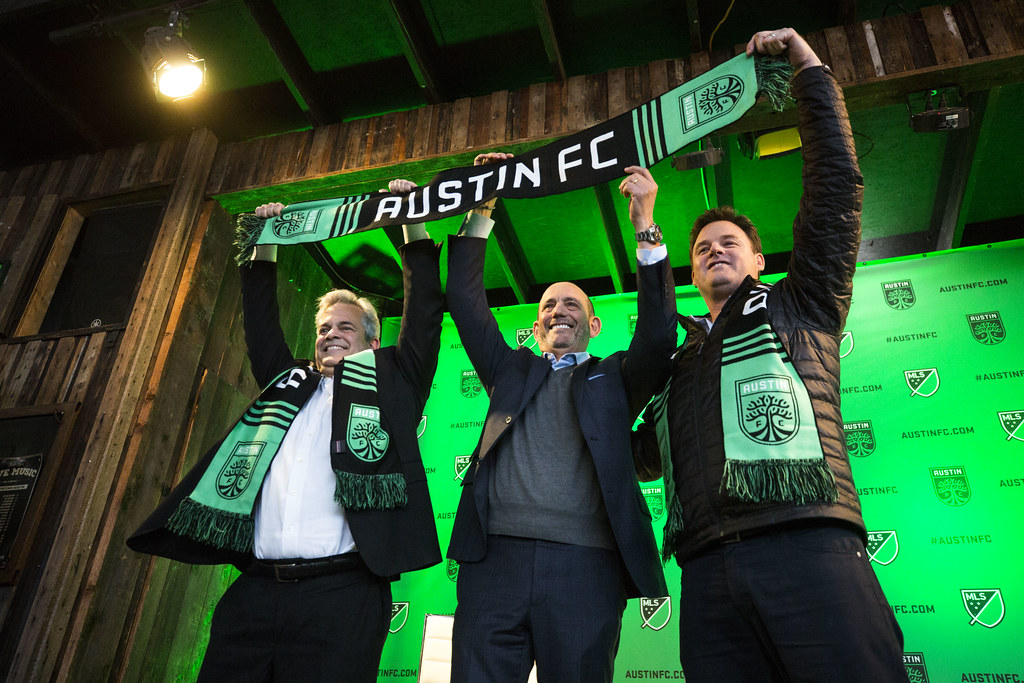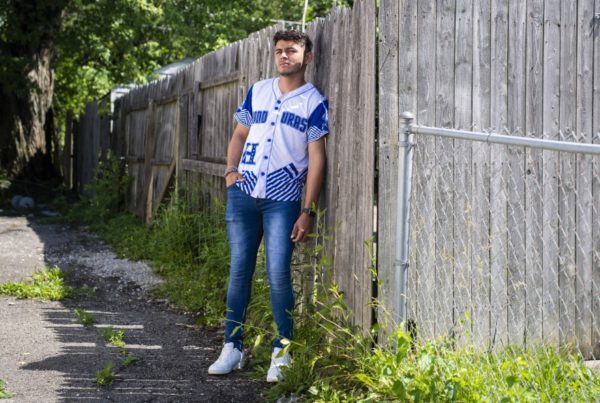In December of 2015, Bexar County Judge Nelson Wolff thought he was announcing a new era for San Antonio soccer.
“We are going to join the world. We are going to be part of the fastest-growing sport in the United States. And we’re going to be winners because in doing that,” Wolff said at Toyota Field. He was at the city’s soccer stadium commemorating a partnership between the City of San Antonio, Bexar County, and Spurs Sports and Entertainment, the business operation behind the NBA’s super-successful San Antonio Spurs. “It will be a great benefit to all the citizens of our community as we move forward to bring Major League Soccer to San Antonio,” he said.
At the time, Major League Soccer (MLS) consisted of 20 teams, but it planned to add at least four more. San Antonio seemed like a decent bet to get one of them. Thousands regularly pack the Alamadome for international exhibition games. The city and county put up $9 million each to buy Toyota Field, which they planned to expand to accommodate the number of fans MLS officials wanted at the league’s stadiums. Getting the Spurs on board meant the city had a sports industry heavyweight leading its lobbying efforts with MLS.
But despite all that, San Antonio’s years-long quest for an MLS team did not have a happy ending. There is no MLS team in San Antonio. Instead, there’s one 80 miles up the road, where pro soccer was never part of the public docket.
“Frankly at the time I was more focused on transportation issues, and land planning issues and affordability,” says Steve Adler, who’s served as Austin mayor since 2015. Adler liked the idea of Major League Soccer – but it wasn’t a priority like in San Antonio.
Any city that just wants to be considered for an MLS franchise has to submit an application to the league. Austin didn’t even do that.
“Despite that, the league kept showing up here, and kept having conversations about their interest in being here,” Adler says.
Both San Antonio and Austin have been on MLS’ radar for a long time. The league’s commissioner, Don Garber, discussed potential expansion in Texas as far back as 2013.
“There are a number of cities in Texas which are intriguing to us,” he said during that year’s “State of the League” address. “San Antonio is one, Austin is another.”
Garber spoke again about possible expansion into Austin during South by Southwest in March of 2017, saying the city “mirrors the incredible value and dynamic that exists in soccer in America. It’s what’s driving MLS: this young, this diverse, this energetic, this tech-focused, this … globally connected group of people living in a city. So it ought to be a pretty good MLS market.”
Adler and Garber talked a few times over the years about soccer in Austin, but the mayor thought these conversations were more big-picture and exploratory than anything else. Besides, San Antonio was well into its MLS bid, and the league was unlikely to OK teams in nearby cities. But in October of 2017, just a few months after Garber praised the city at South by Southwest, those abstract talks suddenly became concrete.
Anthony Precourt, the owner of the Columbus Crew was concerned about the team’s lagging revenues and general relevance in the city. So he decided to move the club to Austin, since his contract with MLS allowed him to do so.
The move happened fast: less than a year after news broke that Precourt was thinking about it, the Austin City Council approved a deal to let him build a stadium for his new club. Austin was going to be an MLS city. San Antonio was not.
When Anthony Precourt and his Austin clause entered the picture, Bexar County Judge Wolff began to feel something wasn’t right. “We found out there was some real, what I consider, dirty politics,” he says.
Precourt, who declined a request for comment, didn’t just own an MLS team, he also sat on the league’s selection committee for new franchises. Wolff wrote to Garber in October 2017 calling it a direct conflict of interest.
“Putting the guy that wants to move to Austin on it, knowing full well if Austin got a franchise we were not going to get one, because we’re only about 75 miles away or so … all of our suspicions became true,” Wolff says. “The Spurs didn’t think that was going to happen – but [if] you’ve been around politics long enough how to smell out a rat – I figured that was a rat. And turned out to be a big rat.”
Had it been known that the Columbus Crew had that Austin clause, Wolff says the county wouldn’t have invested in Toyota Field. He questions why MLS even approached San Antonio.
“I don’t know why they did that knowing full well that Precourt had the right to go to Austin,” he says. “I don’t know why they even opened up a process that we thought was going to be fair and turned out not to be.”
As soon as there was viability in Austin getting a team, Wolff asked the county’s district attorney to investigate Major League Soccer and determine if the process was fraudulent. The investigation ended when the Spurs dropped its bid for an MLS team but if it hadn’t, Wolff said he would have sued to seek financial recovery for the county’s investment.
Austin did get a team – but not the Columbus Crew. It was an entirely new team called Austin FC that Precourt owns. He sold the Columbus Crew and it remained in Ohio.
San Antonio’s thirst for soccer isn’t gone. There’s a thriving scene for it, as evidenced by turnout during the international exhibition games at the Alamodome. Gary Landry is treasurer of the Crocketters, San Antonio’s soccer enthusiast group.
“We’ve shown that we support the sport,” Landry says. “We had 65,000 people in the dome for a U.S.-Mexico game, we have the people here for it but it just seems that the league doesn’t look at San Antonio as being a destination.”
The Crocketters show up to just about every minor league and semi-pro soccer game in the city. Janeca Urrita is the group’s secretary. She’s not mad at Austin getting a team, but is disappointed. “It still seems really unfair that they hadn’t gone through the same process that everyone else has had to go through as far as putting their in their bid, the money that cities have had to put upfront,” she said.
Urrieta moved to San Antonio in 2013 from Ohio and is a big fan of the Columbus Crew. She’s not going to support Austin’s team.
“I don’t plan on attending any games at Austin FC – I would rather drive all the way to Dallas or to Houston to see an MLS game,” she says – before adding there’s one circumstance where she might go.
“I’ve considered going only to watch the [Columbus] Crew play and hope that Crew win the game and beat Austin FC in their own stadium.”
So with no major league team in San Antonio, what’s next? Not MLS, according to Wolff.
“I’d tell them to get lost,” Wolff says. “You cannot go back for a second shot. When you get screwed one time you don’t go back for seconds.”
Although he loves the thought of a Mexican league team setting up in San Antonio, those conversations are still a long way off. While Austin now joins Dallas and Houston in the major league, it leaves San Antonio the opportunity to carve a path to a league of its own.














